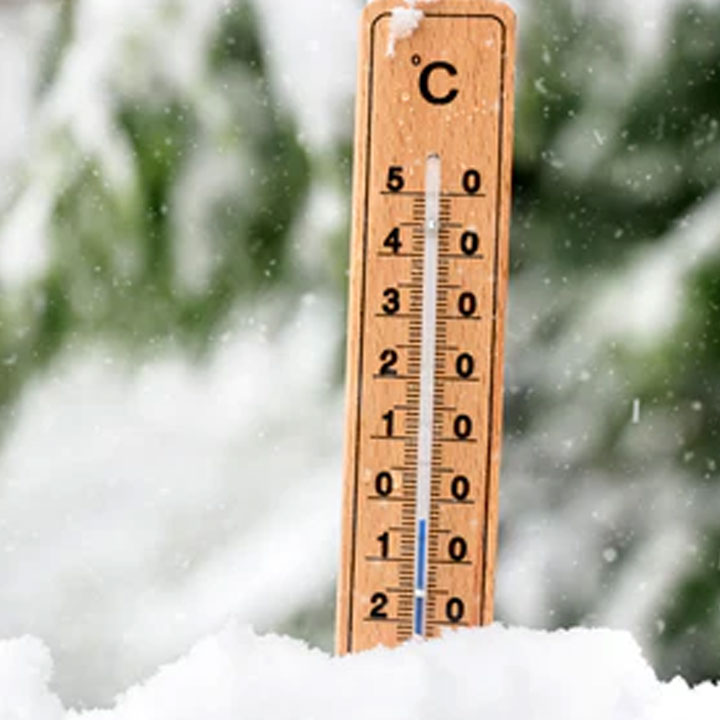So you have your ice bath, you’re ready to take the plunge, but you’re wondering what the best thing to do after an ice bath is. You’ve maybe seen videos online of people doing a horse stance and pushing their arms out in front of them, or running straight into a sauna or hot shower. What’s going to be the safest and most effective thing for you to do?
This article will equip you with everything you need to know about what to do after an ice bath, this is a comprehensive post ice bath protocol.
Why is a post ice bath protocol important?
While ice baths have shown much promise in promoting recovery and reducing inflammation, it is crucial to follow a post-ice bath protocol to maximise these benefits. A post-ice bath protocol refers to a set of practices and strategies that are implemented immediately after the ice bath session to optimise recovery, amplify the benefits and aid the body in returning to its comfort state.
Without a proper post-ice bath protocol, individuals may not fully harness the potential benefits of their cold water immersion experience. And so, a well-designed post-ice bath protocol is crucial to get the most out of your plunge.
A good post-ice bath protocol focuses on things like hydration, vitamin replenishment, light stretching, self-massage, and proper nutrition. These elements work together to enhance recovery, reduce muscle soreness, and optimise the physiological responses initiated by the ice bath.
It is essential to remember that individual responses may vary, so whatever you try implementing into your routine remember to take it slowly and always listen to your body.
So without further ado, let’s get into it.
What to do right after you get out of an ice bath
Use a towel to dry off and warm yourself up gradually
After an ice bath, it is crucial to dry off thoroughly to prevent heat loss. Cold water immersion lowers the body's core temperature, and any remaining moisture on the skin after you get out of the water can evaporate quickly, which leads to further cooling.
By drying off with a towel, you remove the excess water and minimise the risk of prolonged exposure to cold temperatures. This step helps maintain a more stable body temperature and prevents discomfort or potential adverse reactions.
Gradually warm up the body to restore your normal body temperature
Following an ice bath, it's important to gradually warm up the body to restore normal body temperature. Rapidly exposing yourself to a warm environment or engaging in intense physical activity immediately after an ice bath may cause something called vasodilation, which can lead to a rapid increase in blood flow and potential adverse side effects. You may feel dizzy or lightheaded, or even nauseous.
Instead, focus on allowing your body to warm up naturally over time. Put on warm clothing, stay in a comfortably heated environment, and give your body the opportunity to adjust itself over a period of time. This gradual warming process reduces the risk of any adverse reactions and promotes a smoother transition to normal temperature.
Hydration and replenishment
The importance of rehydrating after an ice bath
Rehydrating after an ice bath is crucial in order to replenish the fluids lost during the session. Cold water immersion can cause vasoconstriction, reducing blood flow to the extremities and can even potentially increase urine production. Therefore, it's important to hydrate adequately to restore fluid balance in the body. Aim to drink water or fluids soon after the ice bath to support optimal recovery and overall well-being.
Fluids rich in electrolytes are even better
When rehydrating after an ice bath, you should think about consuming fluids that are rich in electrolytes, as minerals can be lost in the temperature regulation process.
Electrolytes such as sodium, potassium, calcium, and magnesium are essential for maintaining proper hydration and supporting muscle function. Sports drinks, coconut water, or homemade electrolyte solutions can be decent options for replenishing both fluids and electrolytes.

Light stretching and mobility exercises
The benefits of gentle stretching after an ice bath
Gentle stretching after an ice bath offers several benefits for the body. Cold water immersion can cause muscle stiffness and reduce flexibility, and stretching helps counteract these effects. By engaging in some light stretching exercises, you promote blood flow to the muscles, which aids in removing metabolic waste products and delivers oxygen and nutrients to the tissues. Stretching also helps lengthen and relax the muscles, reducing the likelihood of post-ice bath muscle tightness and enhancing your overall recovery.
Examples of some mobility exercises to improve circulation and flexibility after an ice bath
After an ice bath, doing some mobility exercises can improve your circulation and flexibility. These exercises involve controlled movements that gently challenge the range of motion in joints and muscles.
Examples of mobility exercises suitable for post-ice bath recovery include:
- Hip circles: Stand with your feet hip-width apart and rotate your hips in a circular motion, gradually increasing the size of the circles. This exercise helps loosen up the hip joints and improves mobility.
- Shoulder rolls: Stand tall with your arms relaxed at your sides. Slowly roll your shoulders forward and then backward in a circular motion. This exercise helps relieve tension in the shoulders and enhances upper body mobility.
- Ankle rotations: Sit or stand with your legs extended. Lift one foot off the ground and rotate the ankle in a circular motion. Perform both clockwise and anticlockwise on each foot.
Self-massage and foam rolling
How self-massage can aid in muscle recovery
Self-massage techniques can provide a number of benefits for recovery after an ice bath:
Increased blood flow: Self-massage helps stimulate blood circulation in the muscles, which improves the delivery of oxygen and nutrients. This increased blood flow aids in the removal of metabolic waste products, such as lactic acid, and promotes muscle recovery and healing.
Reduced muscle tension: Self-massage techniques, such as kneading, applying pressure, or using massage tools, can help release muscle tension and tightness. By targeting specific muscle groups, self-massage can alleviate knots or trigger points.
Improved muscle flexibility: Self-massage can help enhance muscle flexibility by breaking up adhesions and scar tissue within the muscles. It can help lengthen and relax tight muscles, improving range of motion and preventing muscle imbalances.
Benefits of foam rolling after ice baths
Foam rolling is another good option to help relieve tension and improve your range of motion after an ice bath.
When using a foam roller, start with gentle pressure and gradually increase it as needed. Roll slowly over the targeted muscle groups, pausing on any tender or tight areas for about 20-30 seconds. It's important to maintain proper form and control during foam rolling to avoid unnecessary strain or discomfort.
Long-Term Post-Ice Bath Strategies
Regular ice bath routine and consistency
What’s the ideal frequency of ice baths for optimal results?
To maximise the benefits of ice baths, establishing a regular ice bath routine is important. The ideal frequency of ice baths may vary depending on individual factors such as training intensity, recovery needs, and overall health. However, a general guideline is to incorporate ice baths 1-3 times per week. Approximately 11 minutes total per week is an ideal amount, either in one session or broken out over a number of sessions.
It's essential to strike a balance between providing the body with the recovery benefits of ice baths and allowing it enough time to adapt and respond to the stressors induced by the cold exposure. Overuse or excessive frequency of ice baths may lead to diminishing returns or potential negative effects on the body's adaptive response.
Importance of consistency:
Consistency is key when it comes to reaping the long-term benefits of ice baths. Establishing a consistent ice bath routine helps the body adapt to the cold exposure and promotes a better recovery process. Here's why consistency is important:
Adaptation and conditioning: Regular exposure to ice baths allows the body to adapt and build tolerance to the cold, enhancing its ability to recover and respond to more frequent and subsequent cold exposures. Consistency in your ice bath routine helps condition the body's physiological and even psychological response, improving circulation, reducing inflammation, and optimising recovery over a longer period of time.
Muscle recovery and performance: Consistently incorporating ice baths into your recovery regimen supports ongoing muscle recovery, reduces muscle soreness, and aids in overall performance enhancement in the long term. By consistently providing the body with the benefits of cold exposure, you can maintain and optimise the positive effects on a frequent basis, which builds up over time.
Long-term recovery and injury prevention: Consistency in ice bath usage helps establish a foundation for long-term recovery and injury prevention. Regular ice baths can aid in managing chronic inflammation, reducing the risk of injuries, and supporting overall musculoskeletal health.

Monitoring and tracking progress
Tracking variables such as muscle soreness, inflammation, and performance:
Monitoring and tracking progress is an essential component of any long-term recovery strategy, including post-ice bath protocols. Here are some key variables to consider tracking:
Muscle soreness: Assessing and tracking muscle soreness levels can provide insights into the effectiveness of your ice bath routine and overall recovery strategies. Subjective scales, such as the visual analog scale (VAS) or numerical rating scale (NRS), can be used to rate the intensity of muscle soreness.
Inflammation markers: Monitoring inflammation markers, such as C-reactive protein (CRP) levels or markers of oxidative stress, can help assess the body's response to cold exposure and recovery. These markers can provide valuable information about the body's inflammatory state and overall recovery progress.
Performance indicators: Tracking performance-related variables, such as strength, power, endurance, or speed, can help gauge the impact of ice baths on athletic performance. By monitoring changes in performance over time, you can assess the effectiveness of your ice bath usage as a part of your overall recovery process and make informed adjustments as needed.
In this article, we have explored and expanded on the importance of a post-ice bath protocol for maximising the benefits of cold water immersion. Here are the key points to remember:
- Ice baths offer several benefits, including reduced muscle soreness, decreased inflammation, enhanced recovery, and improved performance.
- Immediately after an ice bath, it is essential to towel off and warm up gradually to prevent heat loss and restore normal body temperature.
- Hydration and replenishment are crucial after an ice bath to replace lost fluids and electrolytes. Consuming fluids rich in electrolytes supports optimal recovery.
- Light stretching and mobility exercises promote circulation, flexibility, and range of motion. Examples include gentle stretches and mobility drills targeting major muscle groups.
- Self-massage and foam rolling aid in muscle recovery by reducing muscle tension, improving blood flow, and enhancing range of motion.
- Long-term post-ice bath strategies should include a regular ice bath schedule and consistency to allow the body to adapt and respond to cold exposure effectively.
- Monitoring variables such as muscle soreness, inflammation, and performance provides insights into the effectiveness of the ice bath protocol and helps make informed adjustments.
While this article provides valuable insights and recommendations, it's important to recognise that each individual is unique. What works well for one person may not have the same effect on another. Therefore, we encourage readers to experiment with different strategies and techniques to find what works best for their specific needs and preferences. Listen to your body, pay attention to how it responds to different approaches, and make adjustments accordingly. Remember, the goal is to develop a personalised post-ice bath protocol that supports your recovery and helps you achieve your performance goals.





Leave a comment
This site is protected by hCaptcha and the hCaptcha Privacy Policy and Terms of Service apply.